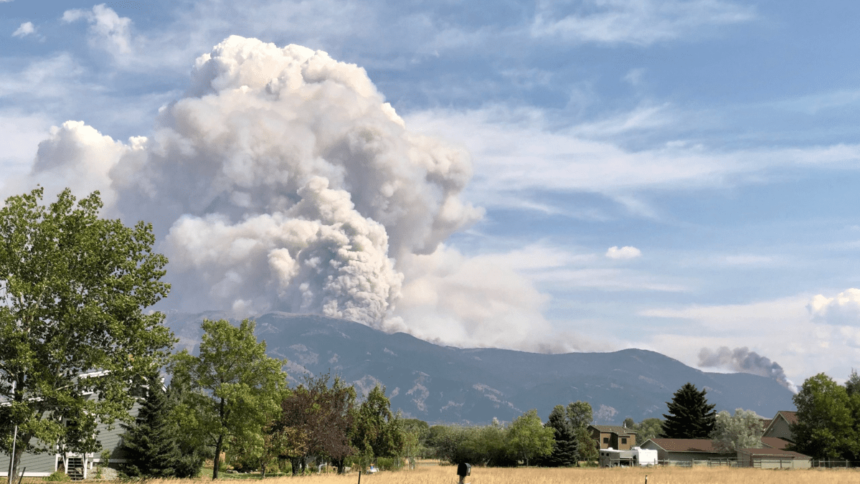Montanans can expect a fairly typical fire season this summer, according to a regional fire weather forecaster who spoke at a briefing in Bozeman on Tuesday morning.
Dan Borsum, a forecaster based in Missoula with the Northern Rockies Coordinating Center, mentioned that the springtime moisture has helped mitigate the effects of a generally poor winter snowpack in Montana. He also noted that areas of the state that have seen multiple years of precipitation deficits, like northwest and southwest Montana, are at a higher risk for increased fire potential.
Borsum mentioned at a wildfire season outlook event hosted by Gallatin County in partnership with other governmental agencies that there may be a fine line between areas that could experience larger fires this summer and those that may not. He emphasized that conditions in the Northern Rockies can change rapidly in a short period of time.
“It’s really going to be a fine line [regarding] who possibly could get larger fires this summer and who may not get them. Things can really turn in a short period — like 10 days — in the Northern Rockies.”
Dan Borsum, forecaster, Northern Rockies Coordinating Center
Borsum also mentioned that forecasters are predicting a transition from an El Nino weather pattern to a La Nina pattern later in the summer, which could bring cooler temperatures and above-average precipitation to the region.
He also pointed out that the wet conditions in California due to massive storm systems could benefit Montana by making it easier for the state to access firefighting resources like large air tankers to combat fires.
This year, Montana will have exclusive use of a large helicopter, a Chinook, throughout the fire season. The helicopter will be available for wildfire response starting July 1, as stated by Gallatin County Chief of Emergency Management and Fire Patrick Lonergan.
Lonergan emphasized that the Chinook, which can hold up to 2,500 gallons of water internally for aerial drops, will be dedicated to initial and extended attack firefighting efforts within the state.
The funding for the exclusive use of the Chinook was made possible by House Bill 883, passed by state lawmakers in 2023, allowing unused fire suppression funds to be carried over for preparedness activities in subsequent years. This includes resources like helicopters, hand crews, and forest management initiatives.
During the briefing, officials highlighted the importance of keeping drones away from wildfire incidents to ensure the safety of aerial firefighting operations. Drone interference can ground helicopters and airplanes from executing critical firefighting missions.





